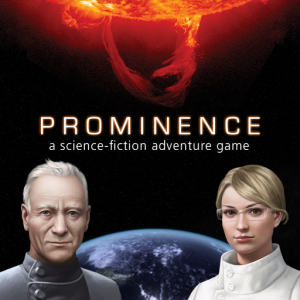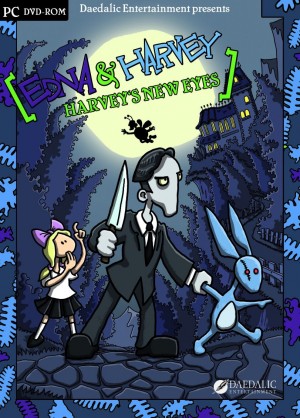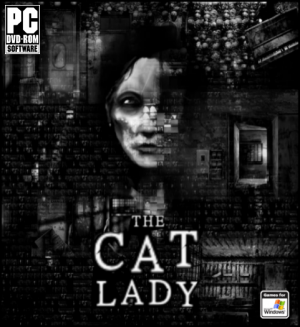Prominence - Mike Morrison and Kevin McGrath interview
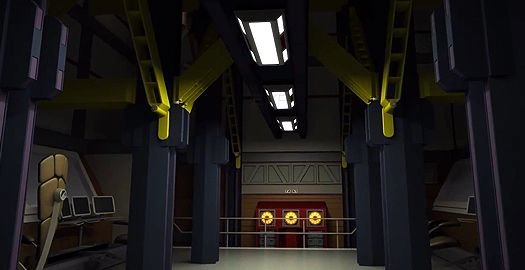
After years of gradual development from the two-man team behind Prominence, the sci-fi first-person indie adventure is finally beginning to pick up steam – or rather, is looking to be picked up by Steam. With their project now on Steam Greenlight, we thought the time was right for a chat with developers Mike Morrison and Kevin McGrath to talk all things Prominence.
Ingmar Böke: Hello, Mike and Kevin, and welcome to Adventure Gamers. Please introduce yourselves to our readers and give them an idea of your backgrounds.
Mike Morrison: Hello, Ingmar and Adventure Gamers! Thanks for having us. My name is Mike Morrison, and I'm from Long Island, New York. My background is in music production, audio engineering, print and web production, marketing, 2D and 3D design, and video production. Apparently, I couldn't decide what I wanted to be when I grow up. I started Digital Media Workshop, Inc. in 1997 and have been getting into trouble ever since.
I am the co-designer of Prominence, and am also responsible for the art, music, and sound of the game.
Kevin McGrath: My name is Kevin McGrath and I have been programming for over 30 years. I am the programmer and co-designer of Prominence. I also work on the puzzles, dialogue, and story.
Ingmar: Obviously we are very interested in finding out more about Prominence. But first I’d like to know how the idea for the project was born and eventually became reality.
Mike: It started out as a calling card for the studio. I thought it would be cool to have a unique demo/walkthrough portfolio to showcase our services. Something that was fun and interactive.
 |
Mike Morrison
|
I don't think I've talked much about this before, but I originally wrote off the idea of making it into a game because it seemed like it would be far too difficult. I dug out the discs for Myst IV and wandered around in the game a bit and thought about the technology and the production effort that would be required. Without an engine and without a dedicated programmer, though, it seemed highly unlikely.
As usual, I ignored any sense of sane judgement about it, and began chatting with various friends and colleagues about the project. I also started researching online to see if there were any good engines available. That's when two amazing things happened:
First, I played the Scratches demo. It blew me away. It was essentially being made by two guys with music outsourced to a third party. That was the proof of concept that I needed to see. It could be done.
The second amazing thing to happen was that my longtime friend, Kevin McGrath, took a keen interest in the project. There was just a simple treatment of the story at that point, but I would call him to bounce ideas around and he was really passionate about helping. He offered to do some code work to speed development. When he became available to work on the project full-time, that was pretty much the moment that we decided that Prominence would be a full-length adventure game.
 |
Kevin McGrath
|
Kevin: This project started for me when Mike approached me about working on the development of a computer game. I was already working full-time at that point, but I told him that I'd help him on my offtime when I could. We spent a lot of time talking about the game in my off hours, setting a sort of framework up for it. Six months later, I was laid off by my employer and so I started working on Prominence full-time.
We spent several weeks in the beginning nailing down the story of the game we wanted to make. Mike had come up with an interesting science-fiction story concept, and we pitted this story against a few others we had come up with. In the end, his sci-fi concept endured and became the starting point for the story of Prominence.
The idea that it was a colonization mission grew out of the story early on, but it was about six months into pre-production that the Letarri appeared on the scene. In the original story, the colonization was being done by a corporation having found a planet suitable for inhabitation. As the story continued to develop, though, there needed to be a greater sense of loss if the colony didn't make it. I was interested in making the colonists a single culture that didn't have a proper home for themselves, that their home was taken away or they had lost their home, a culture with similarities to both post-colonial Native Americans and the Roma—a culture without a country. And so, rather than having a corporate entity colonizing the world, we now have an entire society of people seeking a new home to call their own.
A lot of story points and game elements arose directly out of the story. Once the narrative was tied down, the game development ended up growing organically. Everything in Prominence was built story-first, so we were strict with making sure that everything made logical sense.
Ingmar: What games left such a strong impact on you that you wanted to work on your own games one day?
Mike: I think it probably started back before computers were the gaming platform that they are today. As kids playing tabletop RPGs, we'd make little programs for character generation and stuff like that on the Commodore 64. During game sessions, we'd talk about how one day we'd be around the table and we'd all have monitors in the table in front of us and a big screen in the center with the map and our characters walking around and everything would be animated. Maybe everyone did that? I don't know, but I think the seeds were planted at that point.
There are plenty of little moments where certain games hit me and I knew I wanted to work on them. The earliest ones were probably with the old SID chip in the C64 churning out multi-voice songs. Playing Dragonworld, Telengard, and the Ultima games all left enough of an impression that I still remember those melodies today. That definitely had a hand in connecting music and computers for me, which ultimately led me down the path of music production.
Much later, the storytelling in games like Half-Life and System Shock 2 had some amazing and emotionally powerful content that Kevin and I talked about many times. Those two left huge impressions on us.
I mentioned Myst IV earlier. That left a huge technical impression on me. The focus system, the attempts at touch interaction, the transitional animations. Such immersion! Journeyman Project 3: Legacy of Time had the transitions, too. And Morpheus, which Kevin had played.
And obviously Scratches. That was like a gigantic billboard saying, "It can be done. Go ahead, man. DO IT!"
Kevin: Wow. There have been a lot of games that left an impact on me and made me want to develop a game. Some of the more recent ones included Scratches, which Mike and I both admired and showed us that two-man dev teams really can put out something pretty incredible. A lot of other adventure games really inspired me in terms of the adventure genre, like Syberia, the Gabriel Knight series, Morpheus, and Mysterious Island.
As Mike pointed out, several games (System Shock 2 and Half-Life, in particular) provided great inspiration for the story and content, and provided lessons in story delivery for a video game.
But games from when I was younger played a significant role in my desire to make computer games. These were games like Ultima III and IV and the various text-based games from Infocom on the C64, and a nifty Atari 800 game named Universe. Those were the early inspirations for me to one day make computer games.
Prominence trailer
Ingmar: Now let's dig into the game itself. Please introduce Prominence to our readers in terms of setting, characters and plot.
Mike: Prominence is a futuristic sci-fi adventure that takes place in a far-off galaxy. A beleaguered race of people known as the Letarri set out on a mission to colonize a new world. Something goes terribly wrong with the mission, and the fate of the colony and its people hang in the balance.
The player takes on the role of a mission specialist, part of the vanguard crew tasked with the mission of arriving at the new world and setting up some of the infrastructure before the main populace arrives. There are about 30 other members in the vanguard crew, plus ANNIE, the central computer AI that was developed to aid the mission and help coordinate the colonization effort.
When the game begins, the player is in a state of shock. They'll have to explore, investigate, and use their wits to try to piece together exactly who they are, where they are, and what happened. Then they can decide what they want to do about it.
Ingmar: ANNIE seems to play an important role as your guide. Does she become an integral plot element during the game, or is she mostly there as a companion?
Mike: We spent a lot of time in pre-production talking about ANNIE's role and her relationship with the player. She's partially a companion character, but she's also integral to the plot. It was important to us that all the major characters in the story have their own "side" arcs apart from the main story, and ANNIE is no exception.
Kevin: The main computer, ANNIE, is meant as both a companion and a plot element. She serves as a companion by reinforcing gameplay goals and informing the player of various plot elements as they occur, but she's quite a bit more than that. During the game, the player helps ANNIE get functional again, so in essence, she's a part of the puzzles. She also helps the player in direct and indirect ways to help them solve issues that they need help with. Finally, she serves as a crucial plot element at several points in the game.
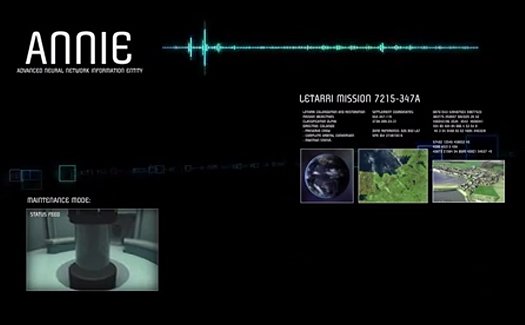 |
The word ANNIE is an acronym for Advanced Neural Network Information Entity |
Ingmar: Does the protagonist's amnesia play a crucial role in the mystery, or were you basically just trying to give each gamer a blank slate to project themselves into?
Mike: The player's initial amnesia is a consequence of events that transpire before the start of the game. Those events are (a crucial) part of the plot.
One of our original design objectives was to try to build it so that the player never knows more than the character, and the character never knows more than the player. We tried to build a storyline and plot that keep them both learning at the same rate.
The player's identity is revealed at the end of the first act of the game, but that's just the beginning of the journey and the start of their character arc. As the player continues through the game, they learn about themselves, they acquire new skills and they hear a bit about what other characters in the game think of them.
Kevin: The protagonist's "amnesia" is a required element of the game. Once the player finishes the game, they will realize that the game had to start out with the protagonist having "amnesia". There is a certain elegance to the game story that allows us to start the player off as a blank slate, to allow the player the feeling that the protagonist is themselves by giving them this "amnesia".
Once again, this is a story element that provided us with benefits from a gameplay aspect. We have always wanted to tell a story where the player knows exactly as much as the character they are playing and vice versa, and this "amnesia" allows us to provide that from the beginning of the game onwards.
Ingmar: Is the whole game confined to the ship itself, or does it finally reach its intended destination and let players explore that too?
Mike: Well, the mission has three main phases of execution: First, the vanguard ship travels to the planet. Second, the ship settles into orbit and is reconfigured into an orbital factory that manufactures the materials and structures needed for the initial colonization. Third, the infrastructure for the colony is built on the surface, directed by ANNIE and the vanguard team and executed with the help of lots of intelligent machinery.
Despite several people's perceptions, we've officially been tight-lipped about exactly when and where things go awry on the mission, and what consequences that has for the player. I'm not sure we want to change that.
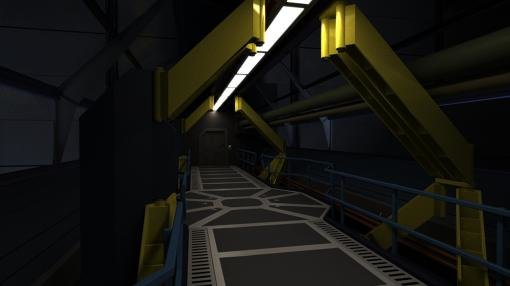 |
The Letarri vanguard spaceship plays a key role in Prominence |
Kevin: The location where the story takes place is actually one of our more interesting points of the game. We wanted to keep it a reveal in the story, which is why we don't reference the environment. We wanted to keep the player's location a mystery so that they wouldn't know at what stage the colonization had gone awry.
It's important to note that we have several locations that we could show screenshots of, but specifically chose not to because we wanted to keep this information a reveal within the game.
Ingmar: People love poking holes in sci-fi inconsistencies and inaccuracies. How much research did you do when it came to the science behind Prominence?
Mike: A few years ago, I was fortunate to be offered a position on a space visualization team in a visual effects guild. We were tasked with developing an animated sequence for a proposed Mars colonization project. We had access to a whole bunch of reference material from NASA and other sources written by scientists and guys with lots of letters at the ends of their names, which was amazing and eye-opening at the same time.
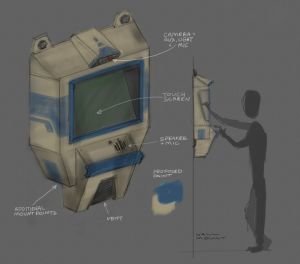 |
 |
Gary Ritchie created about 200 sketches of various in-game environments
|
That experience in itself was fantastic, but one of the best things to come out of that experience was a friendship with Gary Ritchie, one of the other team members on the project. He's a designer and digital artist, and like me, he really seemed to enjoy the connection between the science and the apparent science fiction of it all. I mean, come on, we were working on visualizations for a real-life colony on another planet! How cool is that?
We worked on a few freelance projects together after that, and when it came time to dig into some of the design for the Prominence environments, I started emailing him, asking for his opinions and showing him ideas to get some feedback. That went very well, so we decided to bring him aboard for a few months to help with the details of the environments.
Together, we developed many of the key aspects of the in-game environments, such as the systems for how the power is sourced, stored, and distributed; the how's and why's of various structural components; the contrasting designs resulting from different manufacturing technologies (and the backstory behind them); the communication systems; storage systems; and more.
We only had time and budget to scratch the surface, really, but that didn't stop us from having a great time with it. We built a wiki with something like 90 pages of reference material and I think Gary created about 200 sketches. If there's an opportunity to make a sequel, we're gonna have a blast.
For some things, we still chose to land on the "fiction" side of "science fiction". And there are also a few spots where we deliberately took a more "cinematic" approach to certain events, but in most other places we tried to impart at least a seed of reality behind the tech.
Kevin: I'm very happy with the level of detail that we explored when it came to the science side of our science fiction. I know Gary and Mike spent a lot of time working and designing key structures within the game which have a basis in real science. When that level of detail is introduced, it allows the player to explore their environment and learn about what they are looking at... and we do this with our in-game data archive system that the player can access.
It is true that we needed to fall on the fiction side of things when it came to certain details for gameplay and story's sake. However, within the realm of science fiction, I think we leaned as much towards real science as we could.
Ingmar: Which are your favorite science-fiction movies and which of them had an impact on Prominence?
Mike: Of course, the classic films and franchises like Star Wars and Star Trek are great. Alien and Aliens are both great films in their own ways. Visual feasts like Avatar and the Matrix films are wonderful to watch for the technology and amazing designs. I'm a junkie for all that stuff.
But equally, if not more, I enjoy films like Moon, Solaris, and Contact that ask questions about mortality, humanity, faith, and love. Those were the types of films that probably helped inspire the story for Prominence.
Mindbending sci-fi is fun too. Stuff like Inception and Source Code that leave you wanting to immediately watch the film over again.
Can I include science-fact, too? Apollo 13 is one of my all-time favorites.
Kevin: I'm a big fan of a lot of science-fiction movies; they are a favorite genre of mine. My most favorite have to include the Aliens movies, and movies like Sunshine and Moon. Both of the latter ones provided some impact on Prominence for the environment and atmosphere.
 |
Mike and Kevin have drawn deeply from their passion for sci-fi stories while developing the concepts in Prominence |
Ingmar: At one point in the game players will have to make a decision which results in two different paths. Please give us an idea how that narrative-branching works.
Mike: It's two separate paths -- essentially there are two different versions of the final act of the game – and each of them has a few possible ending variations depending on the player's decisions in other parts of the game. There's also unique content along each path.
Kevin: We wanted to make the two-ending branch something that is a conscious decision by the player. But we also wanted to insure that the results of the decision aren't clear until the final few minutes of the game. We want the player to discover the decision point, and then act on it based upon what evidence they have for the different outcomes. Needless to say, I imagine that players will most certainly want to replay the game once more to try out the other path.
Ingmar: Our preview talks about the puzzles encountered early on, but are those a good indicator for the overall game? Please give us an idea of the different types of puzzles in the final version and tell us about your philosophy for the game design.
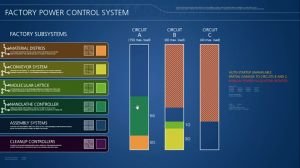 |
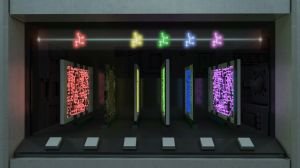 |
Puzzles in Prominence are closely linked to the story
|
Mike: Prominence mostly offers inventory, environment, and GUI/interface puzzles. The inventory involve finding, collecting, and using inventory items – sometimes on objects in the game world, sometimes on each other to assemble or disassemble items.
The environment puzzles involve manipulation of devices or objects in the environment, like turning a valve to stop a freezing jet of coolant, or switching lights around to get a better look at something.
The GUI/interface puzzles are usually specialized interactive computer systems terminals that control various systems/areas in the game. These are mostly point-and-click, but we also have some that work on text-based instructions.
Some puzzles use combinations of these, so you might have to use a laser cutter on a pipe fitting, but only after using a computer terminal to make sure that the pipeline has been drained safely.
There are also a few puzzles that don't cleanly fit into any of these categories, but I don't want to spoil those.
Kevin: Puzzle design has always been big on our list of stuff to get right. We have spent hours and hours on different puzzle ideas only to scrap them because they didn't fit or they didn't work gameplay-wise.
Our philosophy about puzzles has always been that they have to arise directly out of the story. They should feel organic and not contrived. The player should always feel that the task they are doing is something they would expect to be doing at that particular point. Several really clever puzzle concepts had to go by the wayside because they didn't meet that requirement. On the other hand, such diligence has really paid off in the feedback we've already received from beta testers and press.
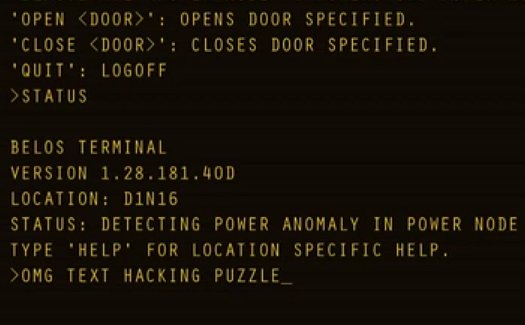 |
Some puzzles work on typed instructions |
Ingmar: I found the following statement on your website and I’d be very interested in finding out how you plan to implement the following elements: “Acquire and use additional skills and abilities as you progress through the adventure.”
Mike: We wanted the gameplay in Prominence to continuously evolve. That's one of the things about RPGs that we really like. There's always something new to try. So things start out very minimalist and straightforward at the start of the game, but as it progresses, the player gets access to some new skills and tools to help them on their adventure.
Some of the new skills/tools can be used anywhere, so if you want to go back to earlier parts of the game and try them out, you can do that and maybe you'll get something for your trouble. Others can only be used in certain places, but they specifically allow access to new areas or new information that helps move the story forward.
Kevin: As the player progresses through the game, we wanted the ability to give them skills that they could use as they (re)learn them. It's the equivalent of having an inventory item to do something without actually having to use an inventory item. They can use these skills to solve puzzles they wouldn't normally be able to without them.
It's a way of progressing the player along in their journey, that in addition to collecting items, they themselves are acquiring new knowledge and abilities. It provides for a sense of accomplishment as they move through the story.
Ingmar: The two of you admit you're not big fans of dialogue trees, and many first-person adventure games offer a rather lonely experience with very little interactivity between different characters. What about Prominence? You seem to have a rather different approach to introducing different characters.
Mike: We wanted characterization and dialog in the game to reduce that "lonely experience". But we didn't want dialog trees. Instead, our solution was make the conversations happen between other people – not unlike what happens when reading a novel or watching a film – except that in this case, you're actually inside the story and you're part of what's going on and you get to influence the outcome.
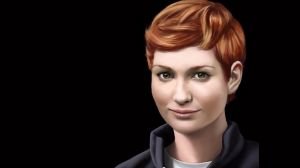 |
 |
 |
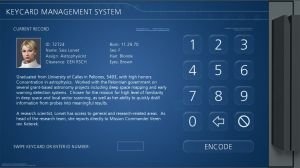 |
Players can interact with over twenty well-defined characters in Prominence |
There's a bunch of characters in the story and there's a lot of dialog and conversations that the player can discover and learn from. This is one of the primary ways the player can investigate the mystery of how things went wrong, and along the way they might also learn quite a bit about their fellow crew members.
Sometimes the player will find voicemails where one character is leaving a message for another character. Other times there are entire conversations that the player will discover with multiple characters discussing all manner of things from the mundane to the life-changing.
All of the communication terminals and cameras in the game contain buffers. They have a built-in cache to store information locally and then they send it out to other remote terminals, devices, or – in the case of cameras – to security feeds and archives.
When disaster strikes and those devices can't upload or send out the recorded information, the messages and recordings stay in the machines' buffers. Since communications are time-stamped, the player can use these audio clues to reconstruct the timeline of the mission once everything started to unravel.
As players reconstruct the timeline, they'll also be constructing layers of underlying narrative.
Kevin: One of the things that always annoyed me about dialogue trees was the issue of "I don't want to say any of those options". It's a matter of the developer trying to come up with suitable dialogue options to satisfy every gamer's possible response. Hitting the big ones is the only way to go here, and sometimes, it just doesn't feel enough. It feels contrived and even if you're a jerk when you talk to characters, they never seem to turn around and tell you to go kick rocks.
However, that being said, we didn't want the player to walk through an empty environment devoid of human presence. So there are plenty of logs, emails, and cameras for the player to check out which indicate what's gone on before. It's not quite the same as having a dialogue with these characters, but it does present their stories in a believable, and in some cases visceral, way.
Ingmar: Since this is your first game, you've surely encountered many new things… both positive and negative. What are some of the pains and joys of that journey so far?
Mike: Well, it turns out that those two things – pain and joy – are often sequential. First there's pain because something isn't working, and then (hopefully!) there's joy when it gets fixed.
Some of it is stuff that many people wouldn't necessarily think is exceptional. Getting the game to adapt and run at the player's native desktop resolution instead of a single fixed resolution, for instance. That was tricky because it had to be done after several years of development were already complete. We thought we had the engine locked up and done: 1024x768 for everyone! And then we had fans coming to us and saying, "This is going to run in HD, right?" and "Will Prominence run in native 1080p?" Adventure games with pre-rendered graphics typically run at one resolution. It used to be a fact of life of the genre. We realized that we had to break out of that idea, and the result was very much worth the effort.
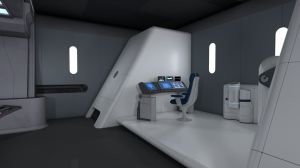 |
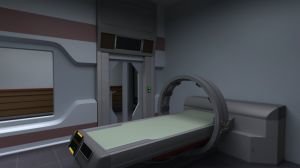 |
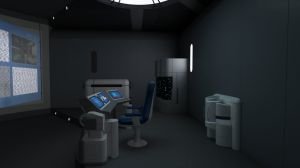 |
On board the Letarri spaceship |
Another invisible, yet epic victory: Using alpha channels and color space conversions via shaders to produce smoother, better quality visuals while still using compressed textures was another big coup. We couldn't believe how bad the quality trade-off was when we switched from simple JPG textures to compressed textures. It was horrifying.
Ever wonder why so many games use noisy, rusty, dirty textures for most of the environment art? This is one of the reasons why. It helps hide the compression artifacts. We scoured the web for a solution and stumbled onto a SIGGRAPH conference paper from some of the guys at id Software. We adapted some of those techniques – which I think were from Doom 3 – and applied them to our rendering pipeline for Prominence to get the speed of compressed textures combined with the quality that we needed.
Most of the technical stuff like that results in a great sigh of relief for us as devs, but it's invisible in the final game experience. It's a bit like doing visual effects for a film: if the gamer doesn't notice anything, then we did our job right.
Not all the joys were preceded by horrible pain, though. Every team member and beta tester has been a joy to work with. Friends and fans have been a constant source of joy and motivation, even in the darkest hours.
There have also been joyous bits of inspiration, like Kev's idea to let the player scroll through available inventory items by using the mouse wheel turned out to be a big hit with playtesters. It's used in first-person shooters all the time, but seems to be almost non-existent in adventure games.
There's definitely pain in throwing stuff away that doesn't work or doesn't fit. There's pain in anything that doesn't meet the quality expectations that you have set for the project.
In terms of failures, the one that bugs me the most is probably not having positional audio. We wanted it, and we tried for it, but ultimately it had to be cut for the game to have a good chance at release in the coming months.
Kevin: There have been a lot of joyous and painful moments throughout the development of Prominence. A lot of the painful moments came because we're new at this. A lot of hours of puzzle development time going down the drain because of gameplay issues or that the puzzle didn't mesh with the story or environment. In the end, though, these kinds of pains ended up making for a better game.
The good times have been great, though. When a whole room or scene comes together in the engine, it can be breathtaking. Sometimes, Mike will send me music, sounds, and environments that get dropped into the game and I get to see and hear them together for the first time—it's awesome.
Fan and tester feedback has been excellent as well. Our fans have been very supportive of the project and it's always heartening to have them cheering for us.
Ingmar: Last year at gamescom, Agustín Cordes told me that the developers he’s been in touch with the longest were Jonathan Boakes and Mike. Jonathan helped Agustín quite a bit with Scratches, so I’m wondering how much Agustín had an impact on Prominence in terms of feedback and suggestions.
Mike: He's been a great friend throughout development. We worked with him on some engine tech in the years between the SCream engine and his new Dagon engine. After Scratches came out, we got video hotspots working and we gave him the code for it, and then he took that and kicked it up a notch when he was writing Dagon. If we got stumped on something with our engine, Kevin would send him a note and he'd kick back some ideas.
My wife and I had the pleasure of meeting up with Agustín and his wife while they were visiting New York City. We had a great time with plenty of laughs over some good food and drink. He was incredibly gracious. At one point, we were sitting in Bryant Park having coffee, and he asked about Prominence and how things were going, and I said, "Come on, man! You're here on vacation! You don't want really want to talk about that stuff, do you?"
And he waved his hand and said, "Yes! I want to hear all about it." He wanted to know all about how we were doing. An absolute gentleman.
Kevin: Agustin has been instrumental in our development process from day one. He's been incredibly helpful and supportive of our project, and I've tapped him for advice several times during the building of the game engine. He's been quite busy himself, working on the Dagon engine and his new Asylum game, but he always has time to help out.
Ingmar: Speaking of Agustín Cordes, when he launched his Kickstarter campaign he’d been working on Asylum for several years already. Is this an option for you as well to finish the project faster or perhaps implement some new features?
Mike: For established developers like Agustín, I think Kickstarter can be a viable option and an effective way to finance development. Since we don't yet have a track record, I don't feel like it would be appropriate to go that route. So, no, we won't do a Kickstarter to finish production.
We did test the waters a bit to see if there was interest for a boxed version Kickstarter, because we know that there are adventure fans who prefer to buy boxed games, but the response was sparse. We might revisit that if the game is well-received, because we have some cool ideas for what could be included. The challenge with something like that is that people who think the game is great will have already bought it once, and may not want the physical copy if they already bought the digital version. The people who haven't already bought it are less likely to shell out additional money above the cost of a standard digital version for a boxed copy from a first-time developer.
So if we end up with a respectable track record then we might have more options with the next project.
 |
The team is currently working on the third of the four acts of the game |
Ingmar: Your original idea was to wait on pitching your game to publishers until 90% of the game was done. How do you feel about that idea now and what pros and cons does the concept of self-publishing contain from your perspective?
Mike: That's right. We wanted creative control over the project, and we were willing to spend our own time and money to have it. We also didn't know what the learning curve would be like since it was our first game, and we didn't want to be enslaved to a release date.
It turns out that this was one of the best decisions we made on the project. If we had signed with any of our top publisher choices at the beginning of the project, distribution rights would have been tied up with companies that are now insolvent or worse.
The publishing landscape has completely transformed from brick-and-mortar to online, and now gamers and indies have some choices, and it's a win-win. Gamers can now buy directly from developers – either through their own sites or through crowdfunding platforms – and devs can return the love by rewarding those gamers with more of the content that the players want to see and experience.
We recently discovered that some of our fans started adding Prominence to their wish lists on GOG.com. That's amazing to me. We love GOG.com and their DRM-free, value-added approach. It seems like Prominence should be a good fit for their community. I'd like to see that work out.
We'd really like to get on Steam, too. That's going to be quite an undertaking. Even though Valve has acknowledged that Greenlight's current process isn't working, the only way to get distribution there right now is to get upwards of 45,000 upvotes.
The Greenlight campaign will begin soon, and that's going to be a big challenge for our little tiny adventure game. Luckily, we have some amazing fans and we may yet achieve lift-off!
Ingmar: What’s the current status of the project? How much is finished and what is left to do? Any realistic idea about a potential release frame?
Mike: We're currently polishing the third act of a four act game. Production time isn't linear, though. It takes about ten times as long to produce "final" content at the start of development as it does at the end because the pipeline is new and materials and surfaces have to be defined and all that stuff. It's a bit like that old joke about how once you're over the hill, you begin to pick up speed.
We are not currently giving dates, but I'll tell you this much: The next build scheduled to go to the beta team will be the complete game along one ending path. After that will probably be the first release candidate.
Kevin: The game engine is currently locked to new features, and we are working on squashing bugs. In addition, the game scripting is nearly complete. We just need to touch up on several areas and squash bugs.
Our design process has been to build a whitebox version of the game within the scripting for the game and then go back to polish up the game and tweak the scripts for new additions to the engine. We have already done the whitebox version of the game to completion, and we are currently working through Act III of the polish and revision stage.
Prominence gameplay preview
Ingmar: Will there be a public demo at some point?
Mike: A demo is planned. The challenge is to create a demo that accurately reflects the overall gameplay. Since the UI changes and the player gains access to additional skills/abilities as the game progresses, it's difficult to pick the right segment for a demo.
Do we take a part of the later game and risk spoilers in favor of a more complete approach to gameplay? Or do we go with an early part of the game where the UI is very minimal and the player has limited interactions to preserve the story and hope that people will realize that there's a lot more to the full game?
Kevin: We were also kicking around the idea of making a demo outside of normal gameplay that would in essence do both: provide the UI and interface, but not spoil the story. But this requires more time in development, and we're dedicated to bringing the game to players as soon as we reasonably can. It's a dilemma.
There will be a demo though!
Ingmar: Thanks a lot for doing this interview, Kevin and Mike. We wish you all the best in finishing Prominence and look forward to a very promising project!
Mike: This was really fun! Thank you!
Kevin: Thank you very much for having us!



